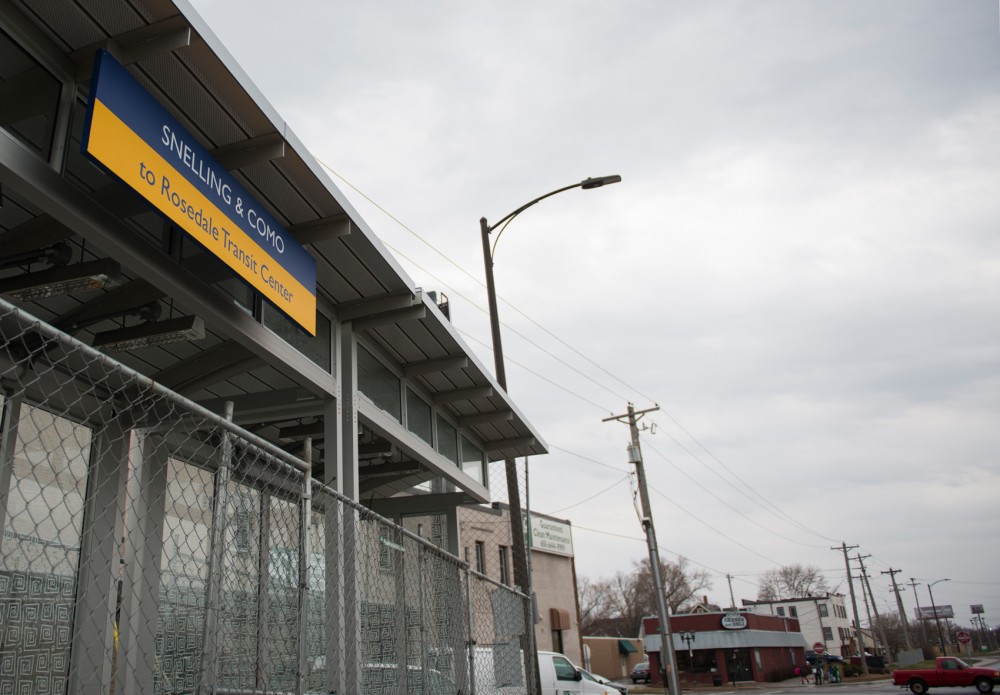Riders of public transit will soon reach certain destinations faster with a new bus route, the region’s first arterial bus route.
In June, the Metro Transit A Line will open, a new type of bus service from the Rosedale Center mall and connecting to both the Green Line on Snelling Avenue and the
Blue Line’s 46th Street Station in Minneapolis. The new route is an arterial Bus Rapid Transit service, which will be faster than normal buses and run more like a light rail train.
What makes this bus route an arterial BRT is its speed as it travels down a high-traffic urban road, as well as its use of curb extensions at stations.
“One of the reasons the A Line emerged … was because of the strong connection to the Green and Blue line,” said Metro Transit project manager Katie Roth. She said University of Minnesota students and faculty make up a large
portion of ridership, and the A Line will help connect the two trains.
About 70 percent of University students live in the city or within a four-mile radius, said Commuter Connection co-chair and cinema and media culture junior Kosal Seak. A major problem for student commuters is that only two buses come each hour, he said.
Arterial BRT services are faster because they make fewer stops, have two doors for boarding and don’t take payments onboard — passengers will instead pay at station machines. The A Line buses will arrive about every 10 minutes, running during the week and weekends.
“What we found about making these small changes is we can speed up the actual transit time of the bus by 20 to 25 percent,” said Metropolitan Council senior communications adviser John Schadl. “And these stations are designed to be easier to maintain … so there will be consistent snow removal and trash collections.”
The bus stations will be built with GPS time tracking, security cameras, emergency telephones and lighting. These additions could help ease students’ safety concerns, Seak said.
“When you’re on University Avenue, everything is well-lit, but once you’re a couple of blocks away, everything gets a lot darker and a lot scarier,” he said.
Schadl said the A Line will take over the 84 bus route when it opens. The 84 will still run but with significantly fewer stops.
The A Line cost about $27 million, with funding split between federal and state governments and the Metropolitan Council.
The new bus route may be able to help build the local economy along the line, said Andrew Guthrie, research fellow at the Humphrey School of Public Affairs.
“The ideal situation would be, somebody says, ‘Snelling Ave.,’ and somebody initially thinks, ‘BRT,’ the same way you say, ‘University Ave.,’ and somebody thinks ‘train,’” Guthrie said.
Currently, there are almost a dozen proposed BRT corridors for the Twin Cities. Though there are bus services there, some feel unsafe or unpleasant waiting at the bus stops, Guthrie said.
“If you’re waiting at a plain bus stop sign in the middle of winter, that can cause people who may not have the means to afford a car to buy a cheap, used car anyway,” Guthrie said. “Arterial BRT helps with that.”
But Seak said more light rail systems would have benefited the Snelling Avenue infrastructure more.
“In areas like New York or Chicago, even though it did cost a lot, their transit system reduces [carbon dioxide] emissions and would encourage more people to walk on campus to the stations,” he said.
Schadl said because Snelling Avenue doesn’t have a lane — or guideway — for a train, it would require heavy construction first.
“To create a dedicated guideway, you have to take up business and severely impact how much lane use you have for traffic,” he said. “It is incredibly expensive and extremely disruptive.”
The whole idea of the arterial BRT is to take high ridership arterial bus routes, like route 84, and improve service for customers, Schadl said.
“We’re a business; customers pay to ride our buses,” he said. “Any business constantly needs to look for new innovations and new ways to serve their customers.”








